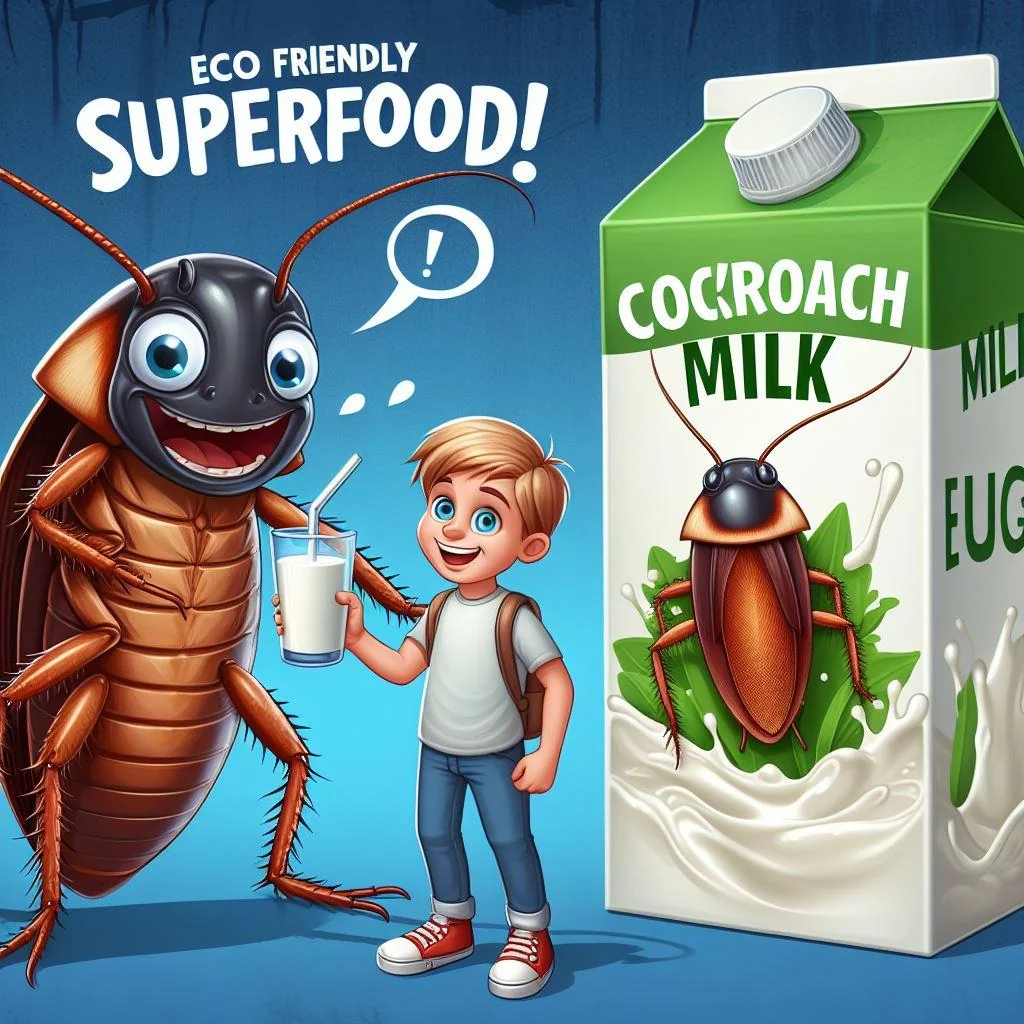Have You Heard of the Nutritional Marvel Called Cockroach Milk?

Cockroach milk, specifically derived from the viviparous cockroach species Diploptera punctata, has recently gained attention as a potential superfood due to its remarkable nutritional profile. Unlike traditional mammalian milk, which is produced by mammals for their young, cockroach milk is produced in the form of protein crystals that serve as nourishment for the developing embryos. This unique biological process allows for a concentrated source of nutrients that may offer various health benefits.
Nutritional Composition
The nutritional composition of cockroach milk is impressive. Laboratory analyses have shown that it contains approximately 45% protein, 25% carbohydrates, and 16-22% fats (lipids). Additionally, it is rich in essential nutrients such as oleic acid, linoleic acid, omega-3 fatty acids, vitamins, and minerals. Notably, cockroach milk provides all nine essential amino acids required for human health, making it a complete protein source. This characteristic sets it apart from many plant-based proteins that often lack one or more essential amino acids.
The protein crystals found in cockroach milk are not only high in energy but also exhibit a unique structure that allows them to release amino acids at a continuous rate during digestion. This slow release can provide sustained energy and support growth and development.
Potential Health Benefits
Research into the health benefits of cockroach milk is still in its infancy; however, preliminary findings suggest several potential advantages. For individuals with lactose intolerance or allergies to cow’s milk proteins, cockroach milk presents an attractive alternative since it is naturally lactose-free. The high protein content combined with beneficial fatty acids may also contribute to improved overall nutrition.
Moreover, some studies have indicated that traditional mammalian milk can play a role in reducing the risk of certain diseases such as cancer and cardiovascular issues. While it remains unclear whether cockroach milk shares these properties, its nutrient density suggests that it could potentially offer similar health benefits.
Challenges in Production
Despite its promising nutritional profile and potential health benefits, there are significant challenges associated with the production of cockroach milk. Harvesting this substance involves killing female cockroaches and extracting the protein crystals from their midguts—a process that is labor-intensive and not currently feasible for mass production. Estimates suggest that producing just 100 grams of this “milk” would require the sacrifice of over 1,000 cockroaches.
Additionally, ethical concerns arise regarding the harvesting process and the sustainability of using insects as a food source on a larger scale. While insects are increasingly recognized as an environmentally friendly alternative protein source compared to traditional livestock farming due to their lower greenhouse gas emissions and feed conversion ratios, public perception may hinder widespread acceptance.
Future Research Directions
As interest in alternative sources of nutrition grows amid global food shortages and increasing population demands, further research into cockroach milk could yield valuable insights into its composition and potential applications in human diets. Investigating gene sequences related to its production may lead to biotechnological advancements that facilitate more efficient harvesting methods or even synthetic production processes.
In conclusion, cockroach milk represents an intriguing area of study within the realm of nutrition science. Its rich nutrient profile positions it as a potential superfood alternative; however, practical challenges related to production methods must be addressed before it can become widely available for human consumption.



